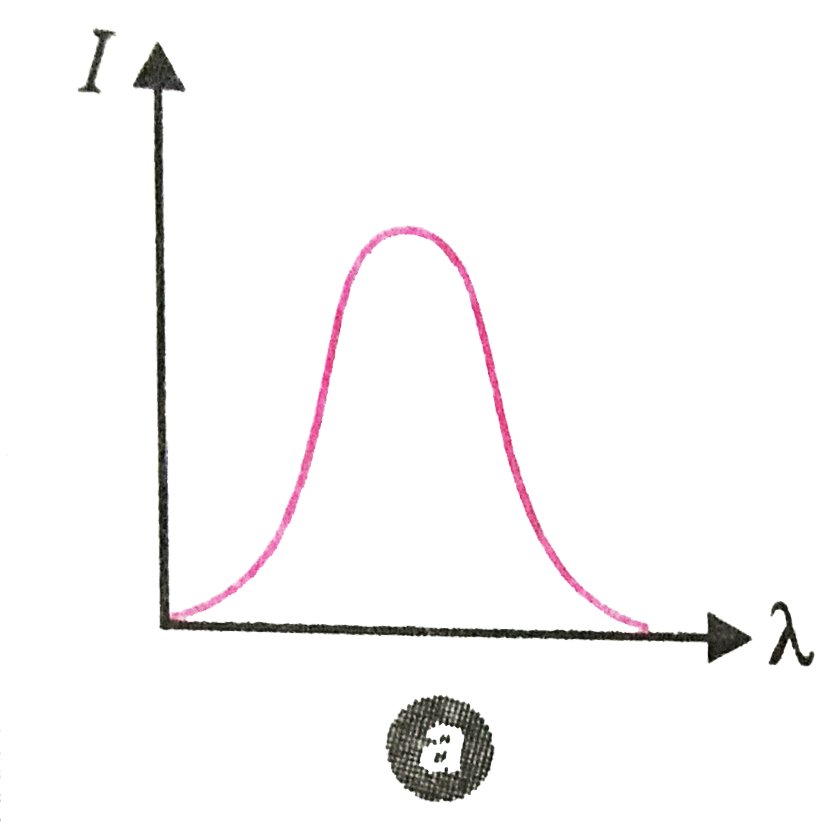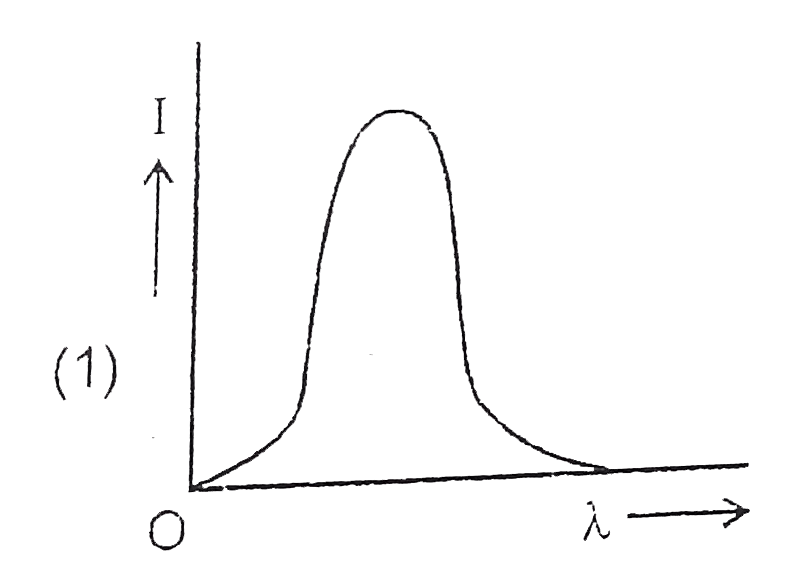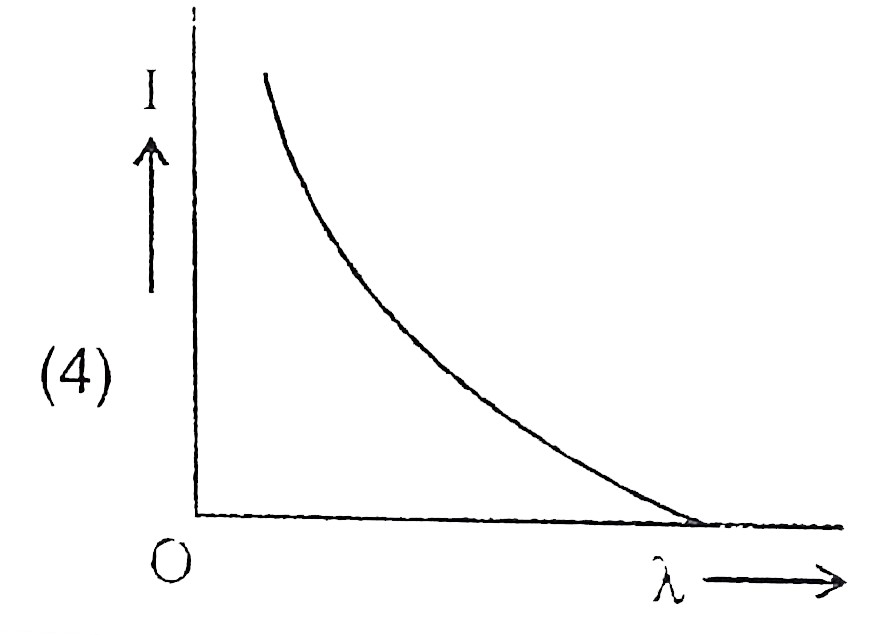The anode vollage of a photocell is kept fixed . The wavelength λof the light falling on the cathode varies as follows




The correct Answer is:d
As the wavelength λ of the incident light falling on cathode is gradually increased, there will be a value of λ above which the photoelectric emission will stop. I.e., the photoelectric emission will stop. i.e, the photoelectric current will become zero. As λ is decreased, the energy of the incident photons increases (E=hc/λ). Due to it, more number of photons will be successful in ejecting the electrons from the surface of cathode. As a result of it, the photoelectric current increases, i.e., I∝1/λ Thus, option (d) is true.
Topper's Solved these Questions
- DUAL NATURE OF RADIATION AND MATTERBOOK - PRADEEPCHAPTER - DUAL NATURE OF RADIATION AND MATTEREXERCISE - Value based question
1 Videos
- CURRENT ELECTRICITYBOOK - PRADEEPCHAPTER - CURRENT ELECTRICITYEXERCISE - Problems for Practice (B)
2 Videos
- ELECTROMAGNETIC INDUCTION & ALTERNATING CURRENTBOOK - PRADEEPCHAPTER - ELECTROMAGNETIC INDUCTION & ALTERNATING CURRENTEXERCISE - Multiple Choice Questions
1 Videos
Similar Questions
The stopping potential in a photoelectric experiment is linearly related to the inverse of the wavelength (1λ) of the light falling on the cathode. The potential difference applied across an X-ray tube is linearly related to the inverse of the cutoff wavelength (1λ) of the X-ray emitted. Show that the slopes of the lines in the two cases are equal and find its value.
View SolutionIn the experimental setup for a photocell, the wavelength of the light incident on the cathod is initially 0.6 times the threshold wavelength for the material of the cathode. Certain change in the experimental setup are given in column A and their possibel effects are given in column B.
Column AColumn B(i)The intensity of the incident light is doubled but the frequency remains unaltered(a)Photocurrent remains the same(ii)Both the intensity and wavelength of the incident light are doubled(b)Photcurrent falls to zero(iii)The intensity of the incident light is doubled and its wavelength is made half(c)Stopping potential increase(iv)The intensity of the incident light ramains the same and the wavelength is made half(d)Photocurrent increases
View Solution
Knowledge Check
The anode voltage of a photocell is kept fixed. The wavelength λ of the light falling on the cathode is gradually changed. The plate current I of the photocell varies as follows:
A B
B C
C D
D
The anode voltage of photocellis kept fixed. The wavelength λ of the light falling on the cathode is gradually changed. The plate current I of the photocell varies as follows:
A B
B C
C D
D
The anode voltage of photocellis kept fixed. The wavelength λ of the light falling on the cathode is gradually changed. The plate current I of the photocell varies as follows:
A B
B C
C D
D
The maximum kinetic energy of photoelectron is doubled when the wavelength of light incident on the photosensitive changes from λ1 to λ2. Deduce expression for the threshold wavelength and work function for metals in terms of λ1 and λ2
View SolutionIf one angle of a triangle is kept fixed then the measure of the remaining two angles vary inversely with each other
View SolutionA vacuum photocell consists of a central cathode and an anode. The internal surface is silver of work function 4.5 eV. The contact potential difference between the electrodes equals to 0.6 V. The photocell is illuminated by light of wavelength 2.3×10−7m.
a. What retarding potential difference should be applied between electrodes of the photocell for the photocurrent to drop to zero?
b. If a retarding potential of 1V is applied between electrodes at what limiting wavelength λ of light incident on the cathode will on the cathode will the photoelectric effect begin?
View SolutionThe cathode and anode in a photocell are respectively.
View SolutionIf λ0 is the threshold wavelength for photoelectric emission. λ wavelength of light falling on the surface on the surface of metal, and m mass of electron. Then de Broglie wavelength of emitted electron is :-
View Solution
